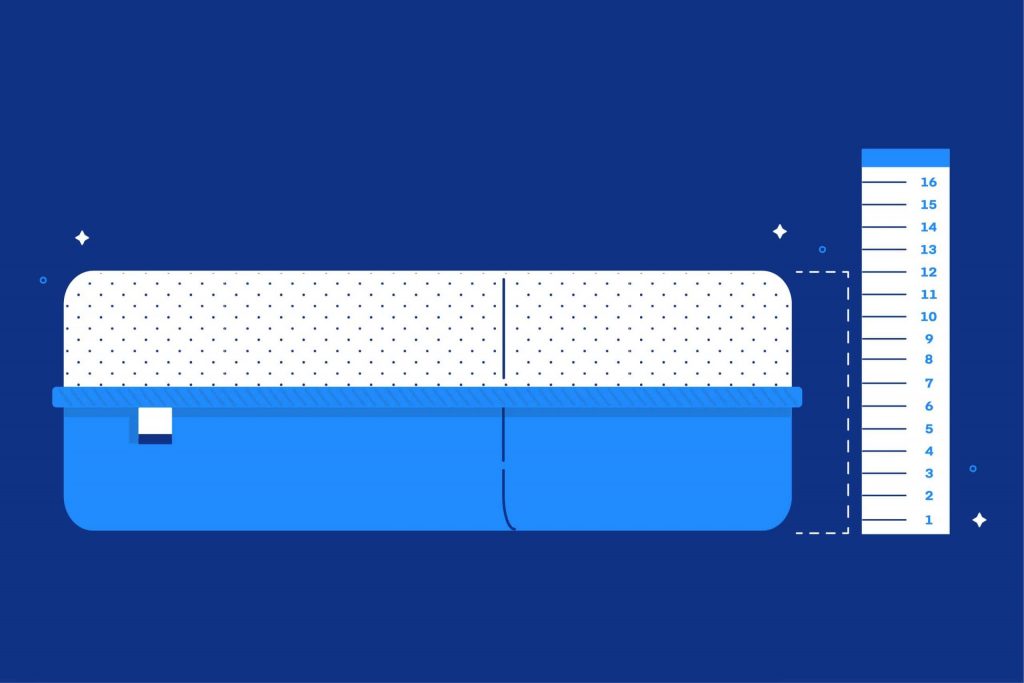

The thickness of your mattress depends on the type of layers it has and how much weight you’re planning to put on it. Other factors that will affect the thickness of your mattress are your weight, sleep position, and any medical conditions you may have. Listed below are the most common reasons why a mattress should be thick. Read on for more information! Also, be sure to check out our buying guide for mattresses. We’ll cover everything from base layers to comfort and transition layers.
Base layer
The base layer of a mattress is its foundation. This layer provides durability, support, and breathability. A thin base layer will begin to show signs of wear and tear sooner. Thin layers also may cause sagging or sinking. A solid mattress foundation is five to six inches thick. This is the most important layer of the mattress. There are many factors that determine the thickness of the base layer. Below are some things to look for when choosing a base layer for your mattress.
Latex is a milky substance produced by rubber trees. It is obtained by tapping or cutting the tree and collecting the latex fluid. The sap is then processed and dried, and then it is combined with air to create foam. Many types of latex are used in mattresses. Latex foam may be made from either natural or synthetic materials. Synthetic latex is less expensive than natural latex. However, it does not have the same feel or lifespan as genuine latex.
Comfort layers
There are different types of comfort layers, which are made from various materials. Each layer contributes to the firmness and temperature regulation of the mattress. These layers also differ in thickness, providing different levels of comfort. While the main purpose of a comfort layer is to provide a soft feel to the sleeper, they do not necessarily need to be the same thickness as the comfort layer. It is important to understand that comfort layers on mattresses are different from the toppers that you can add on top of a mattress.
Wool is a natural fibre harvested from sheep and other mammals. Its properties make it more elastic than other natural fibres. It also has a higher ability to bounce back to its original shape. Wool layers in a mattress provide good support and regulate temperature throughout the seasons. Wool is also flame and bedbug resistant. Coconut coir is a type of fibre harvested from coconut fruit outer shells. It is a natural fibre, wicking moisture away from the body and regulating temperature.
Transition layers
The transition layers in a mattress serve as a buffer between the soft comfort layers and the firm support core. The material in this layer varies in firmness and density depending on the mattress manufacturer’s goals. Some transition layers include latex, memory foam, and even coils. They are important because they provide additional support and contouring while minimizing excess sinkage. However, many mattresses do not have a dedicated transition layer.
Most memory foam mattresses contain a memory foam layer and a high-density foam layer. The addition of these layers will depend on the brand of mattress. However, if you want a comfortable sleep experience, make sure you find a mattress with additional layers made from latex, memory foam, and poly-foam. Memory foam is most commonly used in comfort layers because of its conforming nature and its ability to soften with heat. In addition, memory foam provides pressure point relief.
Gel memory foam is another layer that is commonly included in memory foam mattresses. This type of foam is soft but also has a higher response rate than memory foam. It can also be used in a mattress’ base layer. Many memory foam mattresses also contain this type of foam. It is less popular than memory foam but does have the benefit of providing a softer feel. The memory foam is also less likely to off-gas and is prone to depreciation, so you should check out any potential mattress reviews to see if it has this type of material.
Weight of body
You should consider the weight of your body when buying a mattress. If you are over two hundred pounds, you should choose a thick and firm mattress. If you are underweight, you should go for a softer and thinner mattress. A good night’s sleep is very important. Therefore, you should find a mattress with the correct thickness and material for your weight. Below are some tips for purchasing a good mattress. Read on!
Consider your body type: A heavier person will need a more firm mattress than a lighter one. Heavier people tend to sink deeper into a mattress than lighter people. As a rule of thumb, a mattress with an average weight is firm and supportive, while one with below-average weight will have thinner layers and less support. However, if you’re not sure what your weight is, check the firmness levels and consider the type of mattress you’d prefer.
Height of bed
Your personal comfort is essential. The height of your bed mattress should be the same height as your hips and knees. There’s no set height that’s ideal for everyone, so make sure you select one that fits your personal height. You should also consider the age and size of your body. A person of average height can usually sit comfortably on a 25-inch-high bed, so make sure you select one that suits your age and height.
The height of your bed mattress should be proportional to your overall height. This way, people who are short or tall shouldn’t have to exert extra strain to get in and out of bed. The height of your mattress should also accommodate your knees, so they don’t touch the floor or rest on a headboard. Besides, a high mattress can also affect your body physically. A high-density mattress is the best choice for tall people.
Length of bed
A standard queen-size mattress is about 75 inches wide and about 80 inches long. If you’re over 6’2″, you may want to avoid a twin mattress and instead consider a full-size or queen-size bed. California king mattresses are slightly longer and narrower than standard kings, but they’re still plenty wide enough for two people. Lastly, a king-size mattress is around 16 inches wider than a queen-sized mattress, which makes them ideal for couples.
The length and width of beds varies between the U.S. and the U.K., and a king-sized bed typically measures 78 inches or 75 inches long. Regardless of where you live, the length of the bed mattress can make a big difference in how well it fits in the room. Below are some tips to help you decide the right bed size for your room. This information is useful for planning and shopping.
Considering the size of your room is important. A ten-by-11-foot bedroom is a more comfortable layout because you can place end tables flanking the bed and still have enough room to open the door. Many people think that a double bed and a queen bed are the same size. This is a mistake! Queen beds are actually 60 inches wide and 80 inches long, making them slightly longer than double beds.
Memory foam
There are a number of factors to consider when choosing a memory foam mattress. A thicker memory foam mattress will support your weight better than one that is too thin. This material is flexible and conforms to your body, allowing it to conform to your shape. However, it is important to keep in mind that it has no memory of its own, and that this quality is not always evident in every memory foam mattress.
The thickness of a memory foam mattress is a factor that directly affects its luxury and comfort. It is best to choose a mattress that is at least eight to fourteen inches thick, with a comfort layer of two to three inches on top of a six to eight-inch base layer. The thickness should be within these ranges, as this will ensure that you get good sleep. To choose the right thickness, consider the density of the memory foam and your preferred sleeping position.
Latex foam
There are many factors that affect the thickness of a latex foam mattress, including its overall thickness, the number of layers, and the type of sleeper. You should also consider the type of mattress you have, your weight, and any existing health conditions that you may have. A good rule of thumb is about six inches, but you can go as high as 10 inches. To determine the ideal thickness of your latex foam mattress, read the manufacturer’s specifications and try it out before purchasing.
The most important factor to consider is the type of latex. Natural, organic, or blended latex are generally more resilient than synthetic or hybrid foams. While all latex mattresses are generally more durable, hybrids do not have the depth of contouring that all latex mattresses provide. Natural latex is slightly softer than Dunlop and Talalay, which makes them suitable for people with back or joint problems.







